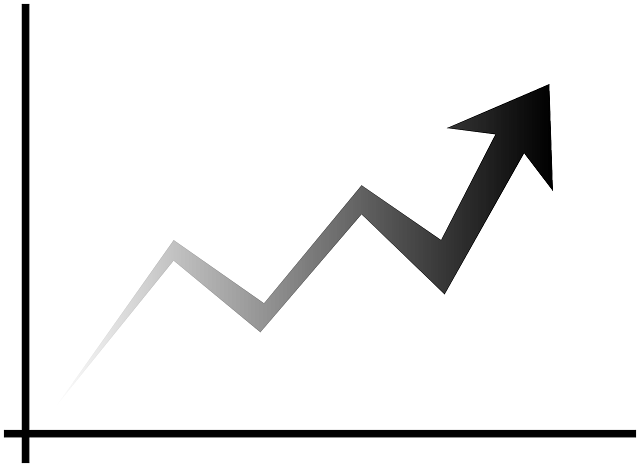The New Trading for a Living: Psychology, Discipline, Trading Tools and Systems, Risk Control, Trade Management
About Author:
Alexander Elder, M.D., is a Russian-American professional trader
and a teacher of traders. He is the author of Trading for a Living, considered
a modern classic among traders.[citation needed] First published in 1993, this
international best-seller[citation needed] has been translated into more than a
dozen languages and is being used to educate traders around the world. His Come
into My Trading Room: A Complete Guide to Trading was named a 2002 Barron's
Book of the Year. His Entries & Exits: Visits to 16 Trading Rooms was named
a 2007 SFO Magazine Book of the Year. His latest book is The New Sell &
Sell Short: How to Take Profits, Cut Losses, and Benefit from Price Declines
(2011).
Summary of Book
Freddy has always, for as long as his friends can remember, been fat. Furthermore, for as long as his friends can remember, he's been "on a diet". In front of other people, he seems quite strict about his diet, but a visit to his kitchen tells a different story. He insists that he wants to be slim, but is still as fat as ever.
To Freddy, the short-term pleasure of having a Snickers every once in a while is stronger than the delayed health and social benefits of weight loss. Freddy is very similar to how many traders behave in the markets. They insist that they want to become rich and successful through trading, but yet they keep ruining it for themselves, by seeking short-term thrills from gambles and other self sabotaging activities.
It is bad enough to deceive other people, but to deceive yourself is hopeless. The world is full of books on how to lose weight, but the world is still full of fat people. This is a top 5 takeaways from this book:
Takeaway number 1: The three pillars of trading:
Successful trading rests on three pillars: psychology, market analysis & trading systems, and money management. This is like a chair with the three legs. Remove one of them, and you'll hurt yourself. Or well, in this case, your trading account. Before you get a grip of yourself, there are no trading systems in the world that can help you in becoming a successful trader. Just like a diet doesn't work if you don't stick with it, you won't be profitable in the markets if you can't stick to your trading system and your money management rules.
Money management can't help you unless you have a trading system with a positive expected return on investment. People have tried this at the roulette tables for decades, and it does not work. The casino will always get the better of you. Finally, there's no trading system that can make up for poor money management. A short string of losses, in combination with poor money management, will destroy your trading account. So you need all three of them.
Takeaway number 2: How to keep your emotions in check:
In Trading For a Living, Alex Elder presents a lot of helpful advice on how to make sure that your emotions are under control while trading. He states that: "Analyzing yourself may actually take as much time as analyzing the markets."
Here are six advice from Alex Elder: Be realistic: If someone's says I currently have over $10,000 and I'm thinking about quitting my job and supporting myself on this? What do you think? I think he should think again. Keep a diary of your trades When you enter a trade, write down your reasons for doing so, and attach a print screen of what the situation looked like. This is essential for learning from your past mistakes, so that you won't repeat them again in the future.
Set up rules before entering: Before joining the crowd and inevitably getting influenced by it, set up a strategy for how you're going to exit the trade. Stop trading If you feel like you are trading too much, and that your results are poor, quit trading for that month and take a step back and analyze yourself and your methods.
Don't count money: If you find yourself translating your current paper profits into things that you'll be able to buy with that money, exit that trade at once. Practice sound money management: We will discuss more on this in takeaway number 5, but practicing this will help you keep your cool.
Takeaway number 3: One indicator to rule them all?
When analyzing markets and observing a price chart of a security that you want to trade, indicators of different kinds will help you in your examination. You can compare these indicators to footsteps of a man walking his dog. The man, in this parable, represents a long-term indicator of the market, and the dog represents a so-called "oscillator". When they are out walking together, the man will probably leave a fairly straight trail, just like a trend following indicator. The dog can't run away from the man further than the length of its leash, and at the end point in one direction, it is likely that it will turn and run the other way. It is only on rare occasions that dog will deviate from this.
Trend following indicators include moving averages, MACD, directional system on-balance volume, and many others, and they are useful for identifying and catching trends. It is usually profitable to trade in the direction of these. Oscillators include stochastic, rate of change, force index, elder ray and many others. They are useful for identifying turning points, and it is usually profitable to trade in the opposite direction of these.
The main point here is that there is no one indicator to rule them all. Different indicators are used for different purposes, and in different situations, and it often pays to combine them as we shall see in next takeaway.
Exponential's are better than normal averages. The moving average is probably the most famous indicator of them all, and it expresses what the average price of the, for instance, last 13 days of the security looked like. Alex Elder recommends using an exponential for this indicator, and for all other indicators involving longer time periods as well, which, instead of weighing all past days equally in calculating the average, attaches more weight to the more recent days.
Watch related markets An indicator is more reliable if it's confirmed by a similar indicator in a related market, for example if the exponential moving average of the last 30 days is up in, say, General Motors, and it's confirmed by an uptick in Ford, it is a sign of strength.
You need a bigger fishing rod to catch a bigger fish: Signals in longer time frames generally lead to greater price movements. Weekly chart beat dailies, which beat hourlies. Start out with a few indicators, both trend-following ones and oscillators, and learn to interpret them correctly. Add more of them as you get more comfortable.
Takeaway number 4: The triple screen trading system:
Traders often say things such as: "the trend is your friend", "let your profits run", "buy low sell high!" But why sell if the trend is up? And how high is high, anyways? An issue of following indicators is that they often contradict each other. Not only can, for example, a moving average disagree with a MACD, about whether there's a trend or not in the market, but a moving average can contradict itself, depending on which time frame that is used. The trend might be up on a daily chart, but down on an hourly.
The triple screen trading system helps with issues such as these. It applies three separate tests to every trade:
1. Market Tide The first screen identifies long-term trends by analyzing, for example, the slope of a weekly MACD histogram. Other weekly trend following indicators could be used here - but this is what Alex Elder used in his original system. Enter only in the same direction as this indicator.
2. Market Wave This screen identifies waves that go against the tide. You want to time your entry well, even when going with the trend, otherwise, you'll risk being stepped out by your stop quickly. Use an oscillator, such as the two day exponential moving average of the force index, to identify a good opportunity.
You're looking for lows in your oscillator for buying opportunities, and highs for shorting opportunities. Remember the dog from the previous takeaway? When he is at the far end of his leash in one direction, he is likely to turn.
3. Intraday Breakout The third screen identifies ripples in the same direction as the tide. It is a technique of entering, and when buying, it's called trailing buy stop, and when shorting it's called trailing sell stop. For buying, when screen 1 and 2 allow for it, place a buy order one tick above the high of the previous day. Buy only if today's price goes to that point, or higher. Place a stop at the low of the previous day.
Here's a summary of the triple screen trading system before we get to money management. When you've built a system, whether it's based on the triple screen or not, just remember this:
"Most traders take a good system and destroy it when they try to turn it into a perfect one."
Takeaway number 5: Money management 101:
Your priorities when constructing a money management system is:
1. Survival,
2. Steady returns,
3. High returns
Dr. Alex Elder emphasizes that survival comes first, always. Live to trade another day. You can ensure this by sticking to a simple rule: Never risk more than 2% of your equity in a single trade. This includes commissions by your broker and slippage when entering and exiting the trade. Set up a stop loss so that this is enforced. Move that stop-loss in the direction of your trade, never against it.
So, if you're long, you may only move your stop upwards, and if you're short, you may only move it downwards. Let's say that you've identified an attractive opportunity for going long, according to the triple screen trading system, in a stock at $100.
The stop-loss should be placed at the low of the previous day, according to the trailing by stop technique, which was, let's say $90. The size of your trading account is $10,000. You can risk, remember, at most 2% of this, which is equal to $200. How many stocks are you allowed to buy in this situation, at most?
If you guess 20 of them then you are right. For every stock you buy you risk $10, and you are allowed to risk $200 in total on any given trade, so you can buy 20 shares, maximum. Now, what if the stock goes down to $95? Are you allowed to lower your stop to $85?
No, never. You're only allowed to move stops in the direction of a trade, which, in this case, is upwards. Here's a summary of my summary: Successful trading rests on three pillars - psychology, market analysis & trading systems, and money management. You may have to spend just as much time analyzing yourself as you spend on analyzing the markets. There is no one indicator for all situations and purposes. Learn about different ones, and combine them for optimal results. Use, or take inspiration from, the triple screen trading system. Survival always comes first! If you don't practice sound money management, you're a gambler, not a trader.





Comments
Post a Comment